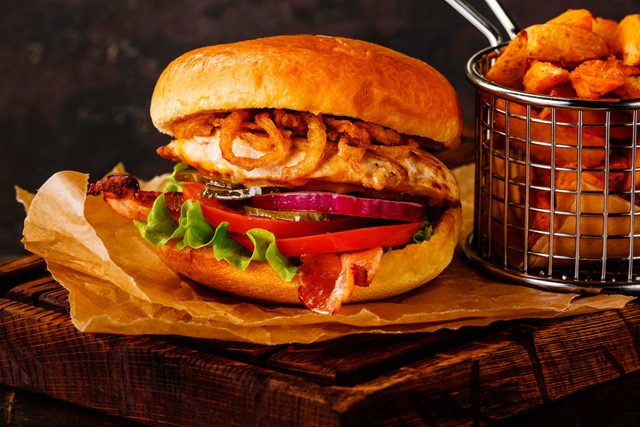
Diabetes patients can choose from a variety of foods. A balanced diet is essential to controlling blood sugar levels. Legumes are rich sources of protein and fiber as well high-quality carbohydrates. Soluble fibre helps to stabilize blood sugar levels and curb hunger. A recent study showed that legumes reduce type 2 diabetes risk. It also improves blood sugar control.
As a low-carb food, avocados are a great choice for diabetics. Avocados are rich in fiber and healthy fats. Walnuts are particularly good for diabetics, as they contain a high amount of omega-3s. It is important that you only consume one serving of walnuts. Chickpeas, which is a legume rich both in fiber and protein, can also be eaten. Chickpeas are high in protein and can be eaten as a snack. They also contain large amounts of dietary fiber.
Most people don’t like spinach. But, pumpkins contain beta-carotene which can be converted into essential vitamin A. If you can't eat the skin, try mixing them with other vegetables for added fiber. They can be cooked and used as a part of a dish. A scoop of Quinoa can be added to any soup or smoothie for extra protein.

Greek yogurt is also suitable for diabetics. A portion of this starchy vegetable is only six to eight grams, so it is a safe choice for a snack or breakfast. Be sure to read the labels carefully, as some brands may contain sugar. A yogurt is fine, but you can also eat fruit in moderation (berries and cherries included). Flax seeds have lignans that help to improve insulin sensitivity, and decrease the risk of heart disease.
In addition to lean protein, sweet potatoes are also high in fiber and potassium. You can cook them and eat them as a snack. Sweet potatoes are a good side dish for lean protein or vegetables, even though they are high in carbs. They are also a good source magnesium, which can help prevent strokes and lower diabetes risk. These are why they are considered the best foods to eat for diabetics.
A wide range of fruits, vegetables and other foods are high in antioxidants. These fruits can be used in smoothies and salads, and they have a low glycemicindex. Greek yogurt can be used in salads and yogurts, as well as berries. They can be used in place of yogurt. You can even use them in smoothies. They can be used to enhance your desserts by preparing them for salad.
Diabetic diets must be balanced. Ideally, the best foods for diabetics should be low in sugar, but not in saturated fats, or trans fats. They should not be high in fat but rich in fiber, protein and fiber. A diabetic diet should not only be made up of whole grains but also fruits and vegetables. Healthy fats are also important. These foods offer many benefits.

Healthy eating habits for diabetics include plenty of fruits, vegetables, and whole grains. Organic, fresh, and ripe fruit and vegetables are the best. Low-calorie foods should be considered the best food for diabetics. There are many ways to incorporate fruits and vegetables into your daily routine. For example, you can eat nuts every day. These delicious and healthy foods are great for diabetics. You must be careful about how much sugar you consume to avoid developing diabetes.
Greek yogurt is another good option for diabetics. It is rich in fiber and contains very few carbohydrates. It can be enjoyed as a snack or as a savory dish. It also helps to include a wide variety of whole grains. They are low-calorie, high-fiber foods. Whole-grain breads for diabetics are excellent because they contain low amounts of sugar. These breads as well as pastas are a great source of fiber.
FAQ
How can you tell what is good?
You have to listen to what your body says. Your body is the best judge of how much exercise, food and rest you should get. It's important to pay attention to your body so you don't overdo things. Be aware of your body and do what you can to maintain good health.
Take herbs and other supplements to improve your immunity
To boost immunity function, herbs and natural remedies are available. Some common examples include garlic, ginger, oregano oil, echinacea, ginkgo biloba, and vitamin C.
However, these herbal remedies should not replace conventional medical treatment. Side effects may include nausea, diarrhea, stomach cramps (dizziness), headaches, dizziness and stomach cramps.
Why is it important to live a healthy life?
Living a healthy lifestyle can help you live longer and more happy lives. Regular exercise, healthy eating habits, healthy sleep habits and stress management can all help prevent strokes, heart disease, diabetes, and cancer.
A healthy lifestyle helps us cope better when we are faced with everyday stresses. A healthy lifestyle will help us feel more confident and younger.
Statistics
- In both adults and children, the intake of free sugars should be reduced to less than 10% of total energy intake. (who.int)
- WHO recommends reducing saturated fats to less than 10% of total energy intake; reducing trans-fats to less than 1% of total energy intake; and replacing both saturated fats and trans-fats to unsaturated fats. (who.int)
- nutrients.[17]X Research sourceWhole grains to try include: 100% whole wheat pasta and bread, brown rice, whole grain oats, farro, millet, quinoa, and barley. (wikihow.com)
- According to the Physical Activity Guidelines for Americans, we should strive for at least 150 minutes of moderate intensity activity each week (54Trusted Source Smoking, harmful use of drugs, and alcohol abuse can all seriously negatively affect your health. (healthline.com)
External Links
How To
What does the term "vitamins" mean?
Vitamins are organic compounds that can be found in foods. Vitamins help us absorb nutrients from foods we eat. The body cannot make vitamins; therefore, they must be obtained from food.
There are two types if vitamins: water soluble, and fat soluble. Water-soluble vitamins dissolve easily when they are dissolved in water. You can find vitamin C,B1 or thiamine, B2 or riboflavin and B3 or niacin, B3/niacin, B6/pyridoxine, folic Acid, biotin and pantothenic Acid as examples. The liver and fatty tissues are home to fat-soluble vitamins. You can find vitamin D, E K, A, beta carotene, and other fat-soluble vitamins.
Vitamins are classified according their biological activity. There are eight major categories of vitamins.
-
A – Essential for normal growth, and the maintenance of good health.
-
C - important for proper nerve function and energy production.
-
D - Vital for healthy bones and teeth
-
E - needed for good vision and reproduction.
-
K - required for healthy muscles and nerves.
-
P - vital for building strong bones andteeth.
-
Q - Aids in digestion and absorption.
-
R - necessary for making red blood cells.
The recommended daily allowance (RDA), for vitamins, varies depending upon age, gender, or physical condition. The U.S. Food and Drug Administration (FDA) sets the RDA values.
For example, the RDA for vitamin A is 400 micrograms per dayfor adults 19 years or older. However, pregnant women need 600 micrograms per day because it is important for fetal development. Children ages 1-8 require 900 micrograms per day. Infants below one year old require 700mg per day. But, between 9 months to 12 months, the amount drops to 500mg per day.
Children between the ages 1--18 years old who are overweight or obese require 800 micrograms per Day, while those who are overweight or obese need 1000 micrograms. To meet their nutritional needs, children underweight and obese require 1200 micrograms a day.
Children ages 4-8 years who have been diagnosed with anemia need 2200 micrograms per day of vitamin C.
Adults over 50 years of age need 2000 micrograms per day for general health. Because of their higher nutrient needs, women who are pregnant or nursing need 3000 mg per day.
Adults over 70 years of age need 1500 micrograms per day since they lose about 10% of their muscle mass each decade.
Women who are pregnant, nursing or breastfeeding need more than the RDA. Pregnant woman need 4000 micrograms daily in pregnancy, and 2500 per day after childbirth. Breastfeeding mothers need 5000 micrograms per day when breast milk is being produced.